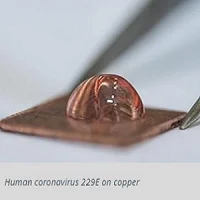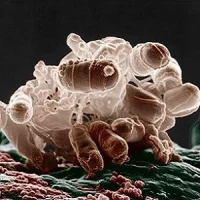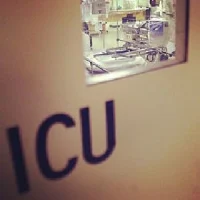New research reveals that invasive methicillin-susceptible Staphylococcus aureus (S aureus) infection (MSSA) caused more infections and more deaths in hospitalised infants than invasive methicillin-resistant S aureus infection (MRSA). The findings, reported in JAMA Pediatrics, could help to inform the adoption of infection control measures that include MSSA in addition to MRSA.
P. Brian Smith, MD, MPH, MHS, of the Duke University School of Medicine, Durham, N.C., and colleagues compared demographics and mortality of infants with MRSA and MSSA at 348 neonatal intensive care units (NICUs) across the U.S. to determine the annual proportion of S aureus infections that were MRSA and to contrast the risk of death after invasive MRSA and MSSA infections. The researchers identified 3,888 of 887,910 infants (0.4 percent) with 3,978 invasive S aureus infections. Infections were more commonly caused by MSSA (2,868 of 3,978 or 72.1 percent) than MRSA (1,110 of 3,978 or 27.9 percent).
According to the results, invasive S aureus infections had an incidence of 44.8 infections per 10,000 infants. The annual incidence of invasive S aureus infection increased from 1997 through 2006 and then declined modestly from 2007 through 2012. The results also show that:
“The absolute numbers of infections and deaths due to MSSA exceed those due to MRSA. Consideration should be given to expanding hospital infection control efforts targeting MRSA to include MSSA as well. Future studies to better define the relationship between MSSA colonisation and subsequent infection will help to clarify the importance of such interventions for preventing MSSA disease,” the study concludes.
Pablo J. Sanchez, MD, of the Nationwide Children’s Hospital, Ohio State University, Columbus, and colleagues have released a commentary on Dr. Smith's findings. The authors write: “In conclusion, the key to minimising morbidity and mortality from any organism (S aureus included) must be prevention of horizontal transmission that can result in NICU outbreaks. We know that horizontal transmission occurs via the hands of healthcare workers, so hand hygiene as part of standard and transmission-based precautions remains the mainstay of prevention. Hand hygiene is cost-effective and easy to perform. ... The common goal must remain prevention of transmission, and the most effective prevention strategy is already in our hands.”
Source: JAMA
Image credit: Flickr.com
P. Brian Smith, MD, MPH, MHS, of the Duke University School of Medicine, Durham, N.C., and colleagues compared demographics and mortality of infants with MRSA and MSSA at 348 neonatal intensive care units (NICUs) across the U.S. to determine the annual proportion of S aureus infections that were MRSA and to contrast the risk of death after invasive MRSA and MSSA infections. The researchers identified 3,888 of 887,910 infants (0.4 percent) with 3,978 invasive S aureus infections. Infections were more commonly caused by MSSA (2,868 of 3,978 or 72.1 percent) than MRSA (1,110 of 3,978 or 27.9 percent).
According to the results, invasive S aureus infections had an incidence of 44.8 infections per 10,000 infants. The annual incidence of invasive S aureus infection increased from 1997 through 2006 and then declined modestly from 2007 through 2012. The results also show that:
- More infants with invasive MSSA infections (n=237) died before hospital discharge than infants with invasive MRSA infections (n=110).
- The proportions of infants who died after invasive MSSA and MRSA infections were similar at 237 of 2,474 (9.6 percent) and 110 of 926 (11.9 percent).
- The adjusted risk of death before hospital discharge and the risk of death at seven and 30 days after invasive infection were similar between infants with MSSA infection and MRSA infection.
“The absolute numbers of infections and deaths due to MSSA exceed those due to MRSA. Consideration should be given to expanding hospital infection control efforts targeting MRSA to include MSSA as well. Future studies to better define the relationship between MSSA colonisation and subsequent infection will help to clarify the importance of such interventions for preventing MSSA disease,” the study concludes.
Pablo J. Sanchez, MD, of the Nationwide Children’s Hospital, Ohio State University, Columbus, and colleagues have released a commentary on Dr. Smith's findings. The authors write: “In conclusion, the key to minimising morbidity and mortality from any organism (S aureus included) must be prevention of horizontal transmission that can result in NICU outbreaks. We know that horizontal transmission occurs via the hands of healthcare workers, so hand hygiene as part of standard and transmission-based precautions remains the mainstay of prevention. Hand hygiene is cost-effective and easy to perform. ... The common goal must remain prevention of transmission, and the most effective prevention strategy is already in our hands.”
Source: JAMA
Image credit: Flickr.com
Latest Articles
healthmanagement, neonatal care, infections, infection control, hand hygiene, Staphylococcus aureus
New research reveals that invasive methicillin-susceptible Staphylococcus aureus (S aureus) infection (MSSA) caused more infections and more deaths in hospitalised infants than invasive methicillin-resistant S aureus infection (MRSA). The findings are rep










